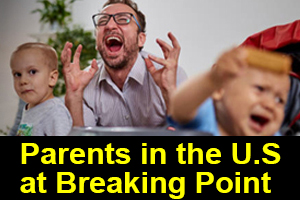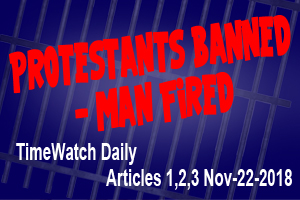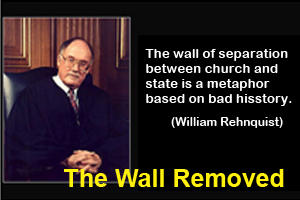- Details
- Hits: 4645
“Something…happened to the race a little while ago. One day Science came along and hustled the sages off to the garret and said to the people: ‘Your wise men are not wise and they have not been telling you the truth. The earth is not flat. The sun does not rise, neither does it set. This little world is not the center of the system. Why do you take these men at their word? Why don't you investigate things for yourself?
See here, the earth is round and we will prove it.’ And Science proved it- right before their eyes. The race was shocked. Men didn't know what to think. They thought their wise men knew. If the wise man didn't know, who did?
Then came Democracy and said: ‘Who is this Authority you have been bowing down to? Who gave Authority the right to rule over you and to say what you should believe? What sort of superstition is this that puts one man over another? Don't you know that you are all sovereigns? that all men are born free and equal? that the divine right of kings is a lie? that you are not children but men capable of governing yourselves and doing your own thinking?’
It was horrible! It was blasphemous! It was so blasphemous that the race stood trembling, half expecting a thunderbolt of divine wrath to strike it down. Then it rubs its eyes and tried to think with its poor confused brain and presently it gave a sudden start, turned its back upon Authority and with silence on one side and Democracy on the other started off with a scornful shout for the Whirlpool.” (Edward Pell. Our Troublesome Religious Questions, 1916, p.18-19)
- Details
- Hits: 4820
“The Roman Catholic Church is an institution unique in the history of the Christian era. For centuries its teaching and practices have exerted an influence not only on purely religious matters but also on the secular life of that part of the world which is called Christian. ‘Roman Catholicism as we know it is the product of twenty centuries of history. To understand it, we must try to understand this history. Not only is it the product of history, but it involves a distinctive attitude towards history.’ Thus writes Jaroslav Pelikan in his now famous book, The Riddle of Roman Catholicism. To his observation we will add the words of Jean Guitten, ‘It is characteristic of the Catholic Church to change, but always staying the same and even more so. The Catholic Church changes in order to stay herself.’” (V. Norskov Olsen, Papal Supremacy and American Democracy, 1987, p.1)
- Details
- Hits: 4749
“Since the United Nations has adopted the role of promoter of religion it is worthwhile to reexamine the UN statement on religious freedom contained in the Covenant on Civil and Political Rights: “Freedom to manifest one's religion or belief may be subject only to such limitations as are prescribed by law and are necessary to protect public safety, order, health, or morals or the fundamental rights and freedoms of others.“ This language contains an ominous loophole. The statement takes away the fundamental freedom to worship with a simple rationalization. As long as the deprivation of religious liberty is necessary to protect, for example, the public order, it may be accomplished with impunity.” (James Hirsen, The Coming Collision, 1999, P.85)
- Details
- Hits: 4463
“An old Jewish teaching compares the tongue to an arrow. “Why not another weapon, a sword? for example?” one rabbi asks. Because, he is told, if a man unsheathes his sword to kill his friend, and his friend pleads with him and begs for mercy, the man may be modified and returned the sword to its scabbard. But an arrow, once it is shot, cannot be returned, no matter how much one wants to.
The rabbi’s comparison is more than a metaphor. Because words can be used to inflict devastating and irrevocable suffering, Jewish teachings go so far as to compare cruel words to murder. A penitent thief can return the money he has stolen; a murderer, no matter how sincerely he repents, cannot restore his victim to life. Similarly, one who damages another's reputation through malicious gossip, or who humiliates another publicly, can never fully undo the damage.” (Joseph Telushkin, Words That Hurt Words that Heal, 1996, p.xx)
- Details
- Hits: 5049
“There is nothing here [in the Creation narrative]on which idle curiosity may feed-nothing on which the poor, human mind can speculate. There is the sublimity and reality of divine truth in its moral power to act on the heart and on the understanding. It could never come within the range of the spirit of God to gratify idle curiosity, by the presentation of curious theories. Geologists may explore the bowels of the earth, and draw forth from thence materials from which to add to, and in some instances, to contradict the divine record. They may speculate upon fossil remains; but the disciple hangs with sacred delight over the page of inspiration. He reads, believes, and worships.” (C. H .Mackintosh. Notes on Genesis, 1880, p.17)
- Details
- Hits: 4369
“There is perhaps no greater threat to freedom then complacency. We now have a generation of people who know very little, if anything, about the severe struggles endured and the high price paid, in blood, to gain the freedoms which we now take for granted. And so, another threat now raises its ominous head.
The generation entering the twenty first century will be the freest in the history of all world. But not only that, they will also be the greatest abusers of freedom in the history of our world.
When a people who have forgotten the price of freedom begin to abuse it, there will be those among them who will suggest that the only way to curtail the abuse of freedom is to restrict it. It is an argument that sounds good but only at the superficial level. It is an argument that sounds compelling to those who are in a panic over the increasing crime, lawlessness and corruption now rampant in society. And it is an argument which gives an easy way out for those who fail to see how people can be changed for the better without coercion of conscience.
In summation, then, as we enter the third millennium, we do so with two enemies to freedom. The first, is the reality of our taking freedom for granted; the second, is our abuse of freedom.
It will be an easy matter for most people to accept a restriction of liberty of conscience if they are persuaded that it will make the world a safer place. But will it? Or can it? “ (Elliot Douglin, The New World Economic Order, 1997, p.31-32)
- Details
- Hits: 5165
- Details
- Hits: 4752
“ Corporations frequently ‘borrow’ concepts from innovative companies that seem to be making headway in the market. Analysts will look at the business model and adapt it for their cooperation with the hopes that by updating their corporate model and infusing their corporate culture, their business will capitalize on the market. This works in the corporate world quite well.
But what may work in the business world does not always translate effectively in the realm of the church. Prominent churches across the United states like Willow Creek, Saddleback, or Fellowship Church all whole conferences that regularly challenge church leaders to think in new and creative ways about the practical workings of the church. Pastors and church leaders attend and return home infused with new ideas, hoping to make some changes so their congregations can impact their communities. Unfortunately, in many cases, these same church leaders attempt to replicate the larger church in toto by applying the principles learned in their local churches.
Churches don't work that way. Outside of the grace and Providence of God these mega churches can never be replicated despite the ongoing attempts by some of them to replicate themselves with video satellite campuses. That doesn't mean that their basic principles of church leadership or organizational structure are not helpful, but pastors and church leaders need to carefully consider and weigh the ideas in light of their own contexts. Because the church is composed of a community of believers with unique gifts and abilities that covenant together for the purposes of evangelism, discipleship, worship and fellowship, no church can be cloned or replicated in any other context.” (White & Yeats, Franchising McChurch, 2009, p.43-44)
- Details
- Hits: 4988
“...[N]ot all that passes for science is science much of what we call science today was once derided and ridiculed by Sir Francis Bacon and other early modern empirical scientists as scholastic obscurantism and metaphysical superstition. This false science was the basis of the political correctness of the Dark Ages. Historians and scientists have labeled it rationalistic science because it seeks to rationalize away common sense and the stubborn facts of sense perception. Today, in the great age of technology, this false conception of science is again passing itself off as true science. Technology is not exactly the same thing as science in the empirical sense. Sure, we have learned to discover, but we are spending the scientific capital built up by past centuries, for we have largely forsaken the path of pure empirical science. It follows that if we have strayed from the path of pure science, then we have abandoned the road to true medical science.” (James Henderson, Death came in a White Robe, 2018, p.24-25)
- Details
- Hits: 4852
“The United States pioneers and fathers were convinced that their own beliefs and principles were superior to all others and universally valid for all societies. This superiority and universality of the American nation are suggested by the shape of the pyramid, which has four faces, representing the four cardinal points of the globe. But, as one moves from the base to the apex of the image, the faces disappear.
The 13 layers of the pyramid below the apex represent the 13 colonies in the initial period, which encompassed immigrants from different parts of the world. This movement in the image indicates that when one moves from the base, where the nations of the earth are represented, up to the apex, traces of race and belief disappear, and one ascends to a universal humanity connected to God. That universal humanity was to be personified in the world through the American nation. The design communicates the idea that the ‘new world’ is not a specific race or religion, but a new humanity, whose plan is to become close to God; that is the Great American project.” (Vanderlei Dorneles, The Last Empire, 2015, p.112-113)







